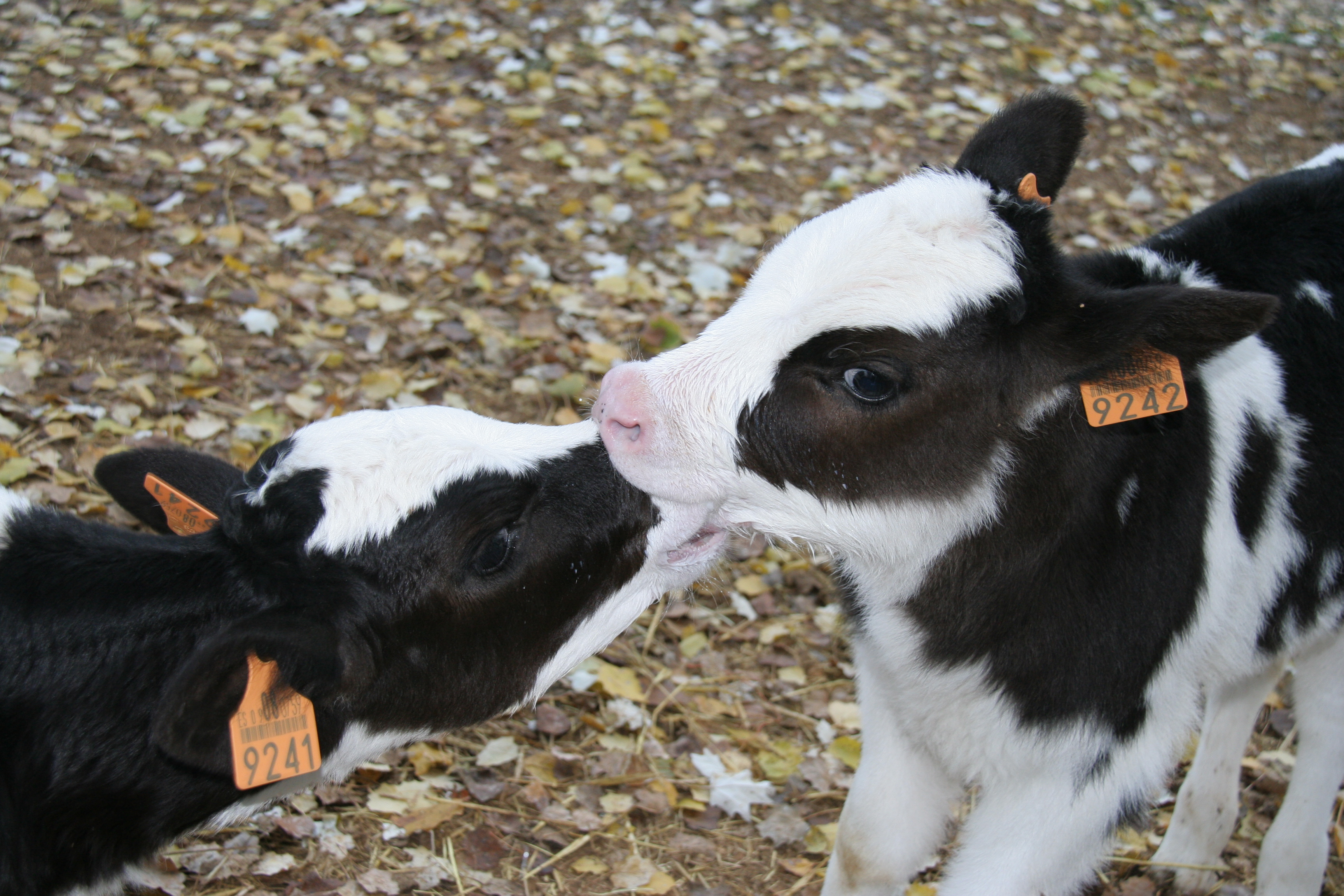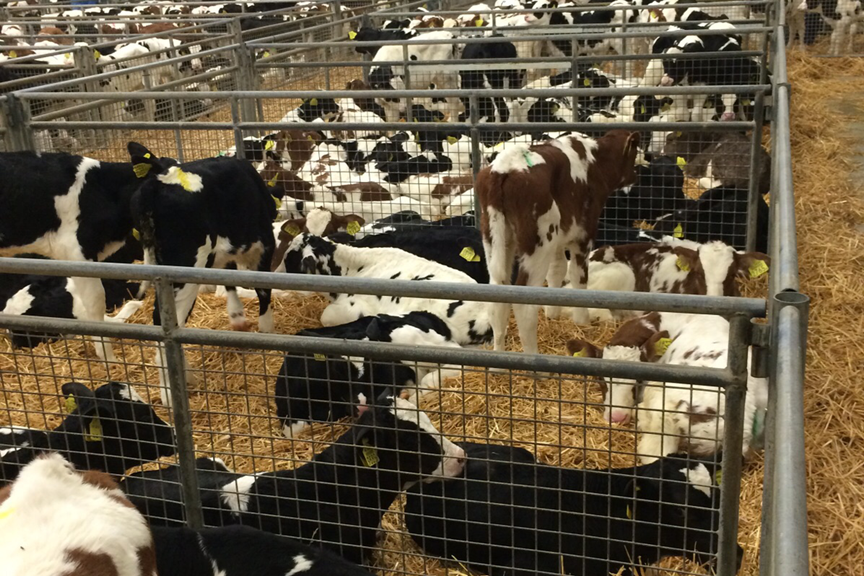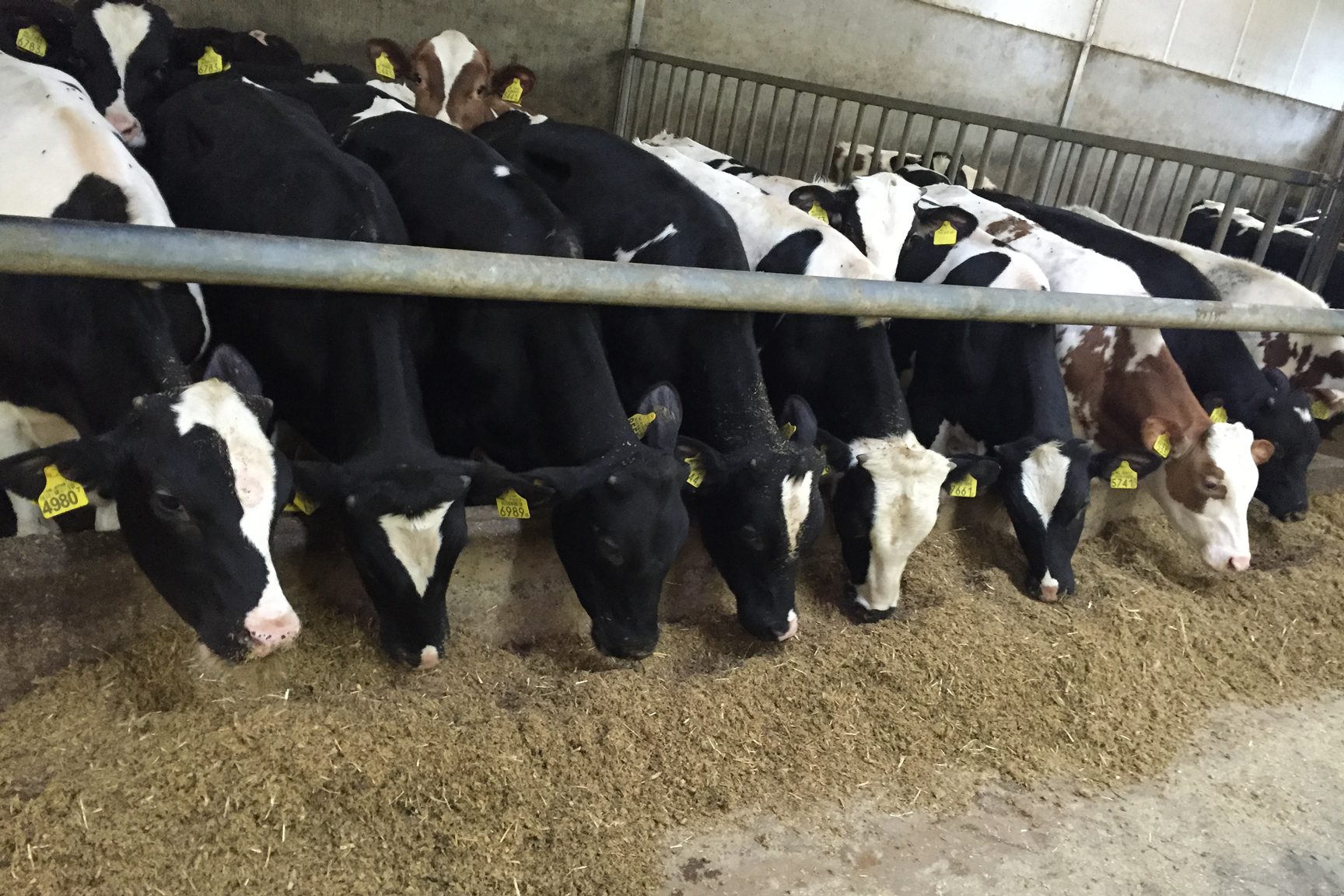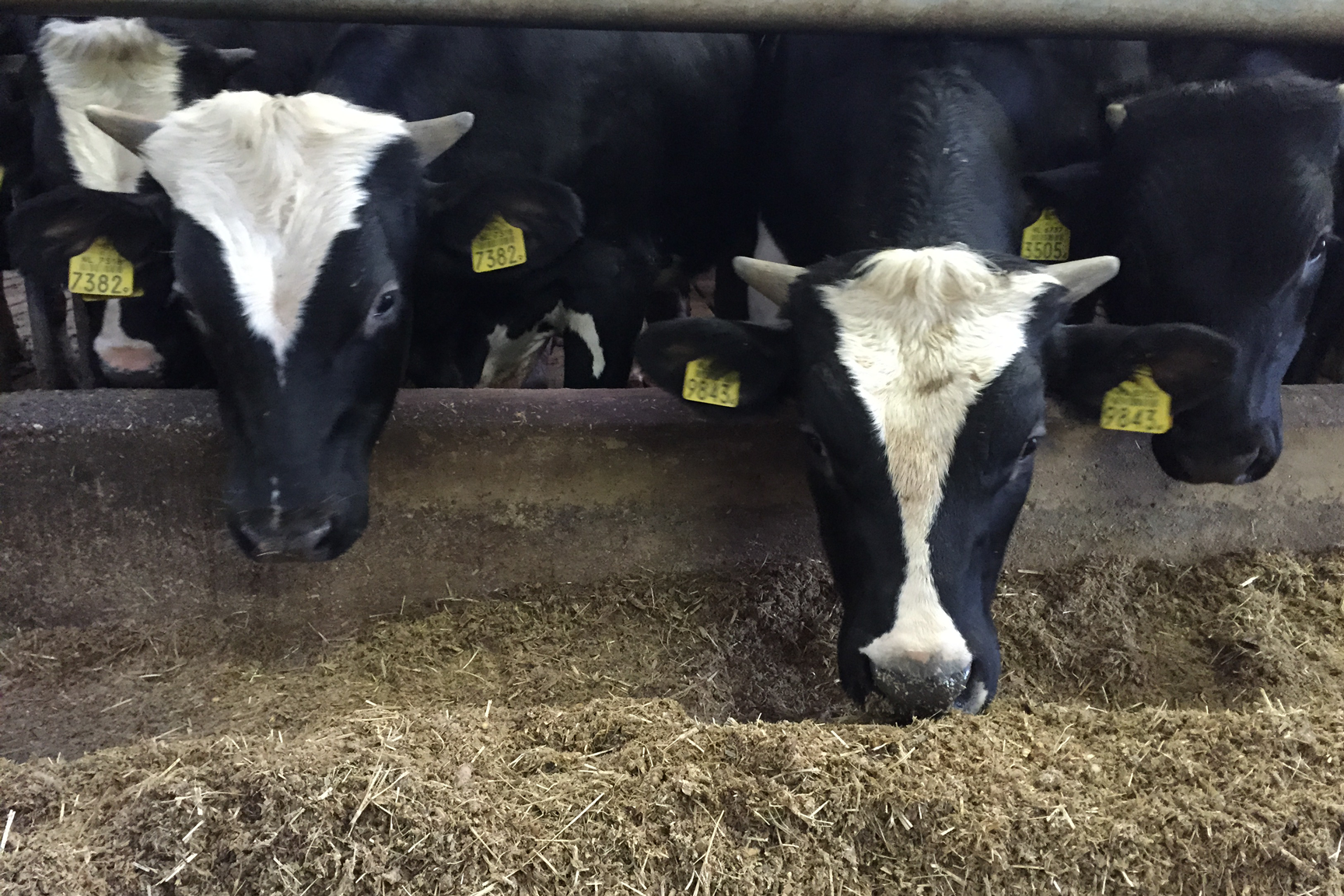
Calves
The purpose of the dairy farmer is to produce milk. In order to give milk, a cow has to calve on an annual basis. The heifer calves are, in most cases, raised by the dairy farmer until they are dairy cows. The bull calves are sold to various distribution centers. In these centers, the so called newborn calves aged 2-3 weeks are being sorted and grouped based on age, weight and growth type.
Rearing period
Newborn calves are purchased selectively in groups at the distribution center and subsequently transported to the breeding company. During the rearing period of approximately 6 weeks, these calves receive milk. Afterwards, a gradual switch takes place towards wheat straw. At the end of the rearing period the so called start calves are being fattened by the breeder himself or sold to other veal farmers.



Fattening period
The start calves with an average age of 11 weeks are being fattened up by veal farmers by means of forage until they become so called fat calves. Consequently, the fat calves are being sold to slaughterhouses at the end of the fattening period. Upon arrival, the animals are weighed and cataloged.
In the Netherlands, 4 fattening categories are defined, namely:
- White veal (slaughter age of approximately 7 months)
White veal has a lighter color because the feeding process mainly consists of milk. - Young rosé veal (slaughher age until 8 months)
Young rosé veal has a white/light pink color because of its young age. - Old rosé veal (slaughter age of 8 to 12 months)
Rosé veal is pink of color because of the young age in combination with a feeding process that mainly consits of wheat straw. - Red meat (slaughter age from 12 months onwards)
Red meat is red of color due to the older age.


